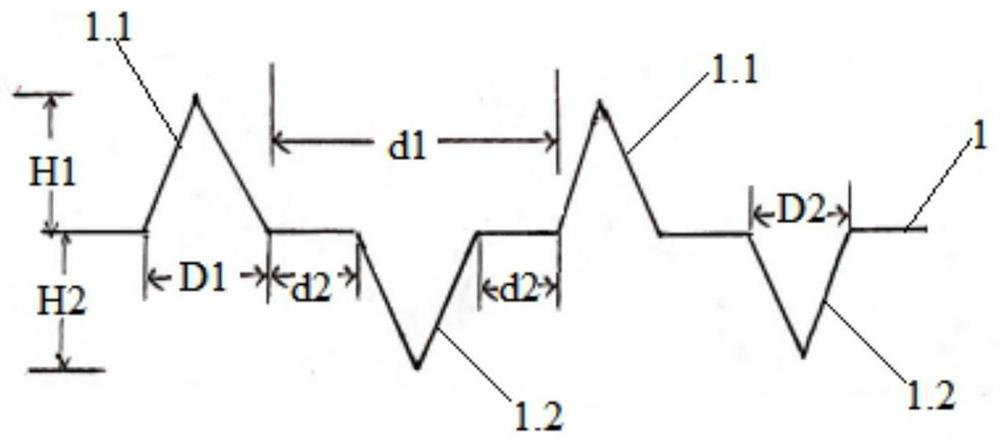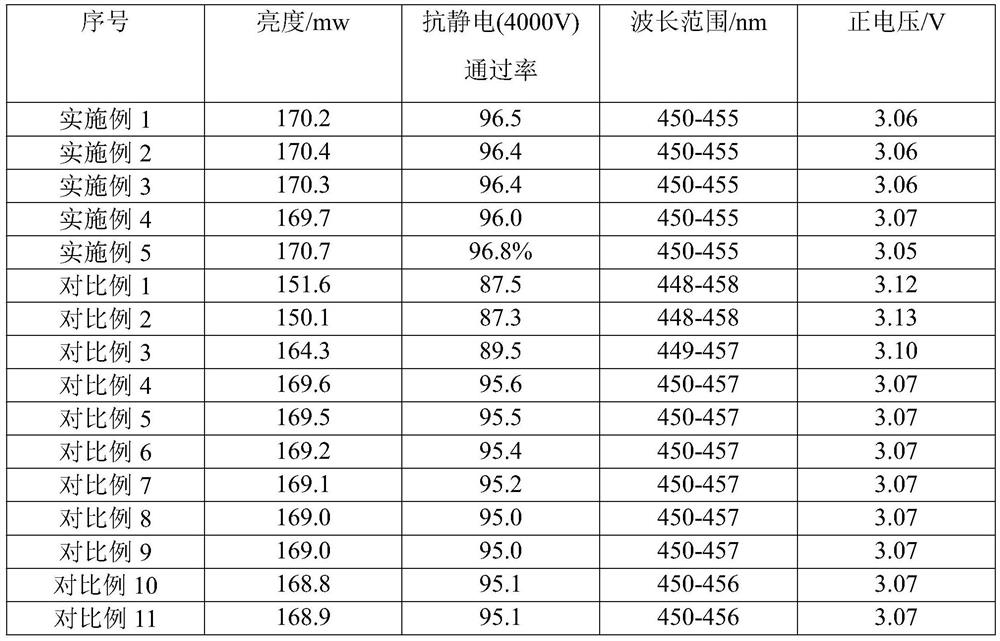A kind of manufacturing method of LED epitaxial wafer
A technology for LED epitaxial wafers and a manufacturing method, which is applied to semiconductor devices, electrical components, circuits, etc., can solve problems such as hindering LED performance, low brightness of LED epitaxial wafers, and reducing energy-saving effects, so as to improve antistatic ability and increase wavelength. Uniformity, the effect of improving wavelength concentration
- Summary
- Abstract
- Description
- Claims
- Application Information
AI Technical Summary
Problems solved by technology
Method used
Image
Examples
Embodiment 1
[0033] see figure 1 , a method for making an LED epitaxial wafer, comprising the following steps:
[0034] Step 3, making a plurality of raised cones 1.1 on the AlN layer 1 at intervals;
[0035] Step 4. A plurality of concave and inverted conical cavities 1.2 are formed on the AlN layer 1 at intervals, and the conical cavities 1.2 and the cones 1.1 are staggered and not connected to each other, that is, between any two adjacent conical cavities 1.2 A cone 1.1 is set, and a cone cavity 1.2 is set between any two adjacent cones 1.1;
[0036] Step 5. Periodically grow a plurality of multi-quantum well light-emitting layers on the AlN layer 1, each of which includes an InGaN well layer and a GaN barrier layer grown in sequence, wherein the multi-quantum well light-emitting layers grown in the first period are The well light-emitting layer is used to fill the conical cavity 1.2 in the step 4. Starting from the second cycle, the multi-quantum well light-emitting layers grown in t...
Embodiment 2
[0050] The difference from Example 1 is that in step 3, D1 is 1000 nm, height H1 is 850 nm, and the shortest distance d1 between the bottom surfaces of adjacent cones 1.1 is 2100 nm. In step 4, D2 is 800 nm, and height H2 is 850 nm. The shortest distance d2 between the top surface of the conical cavity 1.2 and the bottom surface of the adjacent cone 1.1 is 500 nm, and the thickness of the AlN layer 1 is 1800 nm.
Embodiment 3
[0052] The difference from Example 1 is that in step 3, D1 is 1100 nm, height H1 is 900 nm, and the distance d1 between the bottom surfaces of adjacent cones 1.1 is 2200 nm. In step 4, D2 is 900 nm, and height H2 is 900 nm. The shortest distance d2 between the top surface of the cavity 1.2 and the bottom surface of the adjacent cone 1.1 is 600 nm, and the thickness of the AlN layer 1 is 2000 nm.
PUM
| Property | Measurement | Unit |
|---|---|---|
| thickness | aaaaa | aaaaa |
| thickness | aaaaa | aaaaa |
| thickness | aaaaa | aaaaa |
Abstract
Description
Claims
Application Information
 Login to View More
Login to View More - Generate Ideas
- Intellectual Property
- Life Sciences
- Materials
- Tech Scout
- Unparalleled Data Quality
- Higher Quality Content
- 60% Fewer Hallucinations
Browse by: Latest US Patents, China's latest patents, Technical Efficacy Thesaurus, Application Domain, Technology Topic, Popular Technical Reports.
© 2025 PatSnap. All rights reserved.Legal|Privacy policy|Modern Slavery Act Transparency Statement|Sitemap|About US| Contact US: help@patsnap.com


